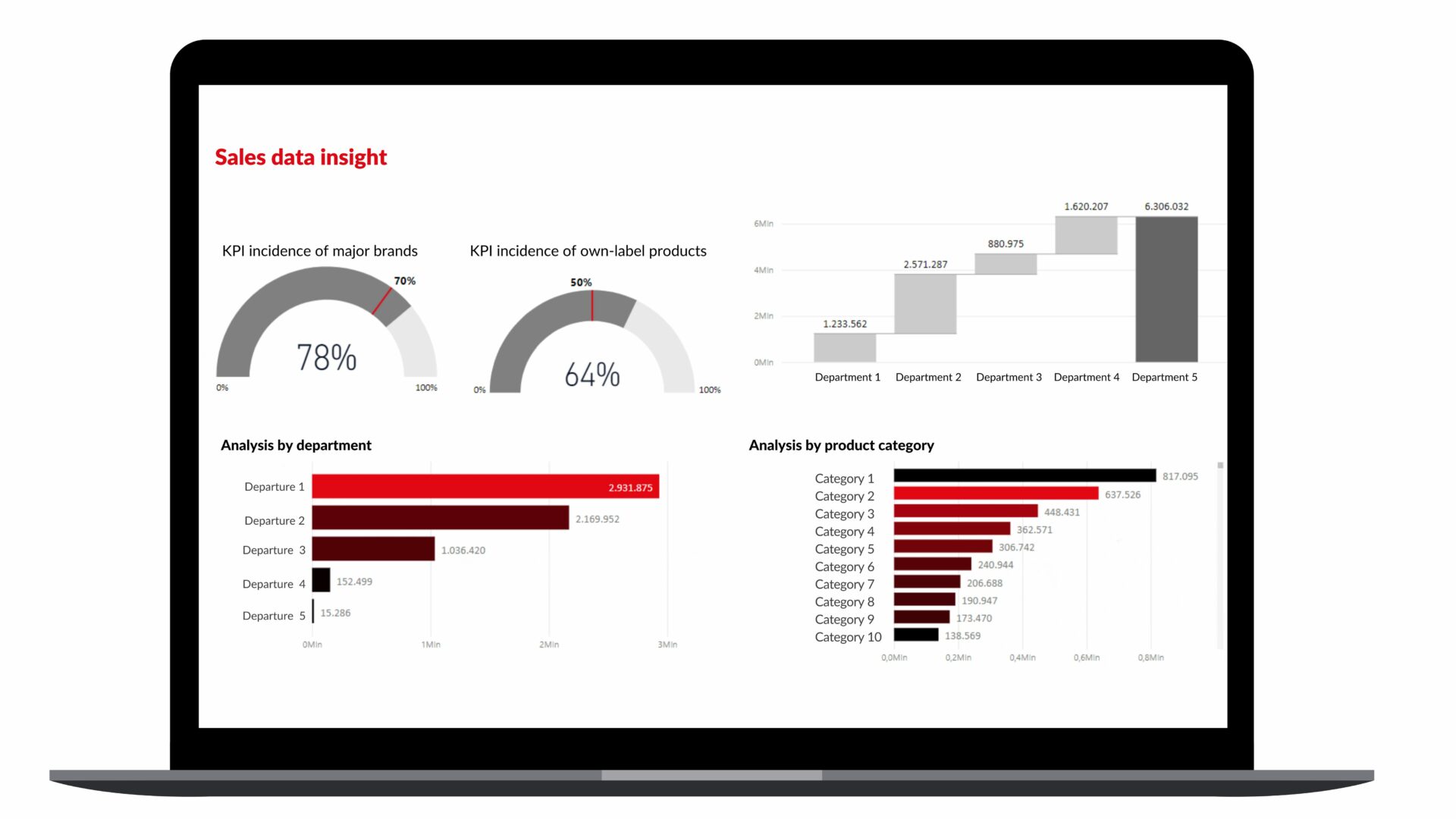How can we respond to sudden market changes, analyse data, and make informed, measurable decisions?
This is a question many entrepreneurs often ask us. In this article, we share our experience in answering it.
Business intelligence is the set of processes and tools for analysing company data, enabling us to:
In the early 2000s, we had little information about business performance, and the reports we could generate were simple and static. Today, the situation has been completely reversed – the problem is now exactly the opposite.
We have several data entry points and the ability to integrate them from third-party systems, but analytical tools are not always within reach for every organisation, due to licensing or implementation and integration costs.
So, when there is a need to keep some control over the data, Excel becomes an indispensable tool. This has led to the proliferation of unmanageable spreadsheets, where human errors are difficult to detect except by a specialist.
In such a complex context, with several factors to analyse, adopting a dedicated tool therefore seems to be the only viable choice. However, in addition to its costs, this solution introduces into the company ecosystem complexities arising from:
And what if all of this were already part of a single Retail Management solution?

If we consider sales data, for example, we have information coming from the till system combined with offer and loyalty data. Today, all of this can be centralised and made available at head office, even for groups with numerous stores.
Having control over your company and being able to support your sales network – whether made up of directly operated or affiliated stores – has now become essential, especially in a fast-moving context where scenarios need to be analysed almost in real time (near real time).
The people carrying out the analyses vary in role and level, and the depth of information can and should be filtered according to their position and responsibilities.
When we need to analyse the performance of a shop or a specific department, the movement of goods – to which a cost must be assigned – is one of the key aspects to take into consideration.
In general, we can say that a sales line is assigned a cost based on agreed criteria, such as the last purchase cost or a weighted average. This logic cannot be applied to processed products, where processing and transformation concepts complicate the attribution of a cost, and where ad hoc files created by department managers often proliferate in order to reach a result that is not always accurate.
Let’s look at a very common situation: a company purchases a side of beef, which is then processed to obtain cuts and products – for example, minced meat. In many cases, the cost of these products is calculated outside company systems.
Having a system that already applies rules and produces costs and a departmental balance sheet means providing reliable tools and data, leaving the authorised user to focus on analysis and action, rather than on gathering and processing information.
We are currently witnessing a generational shift in applications, with artificial intelligence helping to boost productivity and business intelligence also integrating this technology.
Very soon, this will make it possible to build dashboards and KPIs using natural language. You will be able to request, for example, “show me the performance of stores in Veneto over the last 30 days compared with the previous year” or “show me the margin by product category for the fresh produce department during the latest promotion”.
These are just a few examples of how natural language interpretation will simplify interaction with data. This technology will therefore also be accessible to people who need to analyse data without having a technical skillset.
In a business environment now overflowing with data, focusing on the information that matters and being able to build dashboards and KPIs that are truly useful for analysing your company means being able to manage it effectively.
All of this is part of Aton’s know-how: we design our systems not only with daily operations in mind, but also with the aim of providing business management tools within our solutions.
Want to know more about the new technologies Aton is working on? Stay tuned!